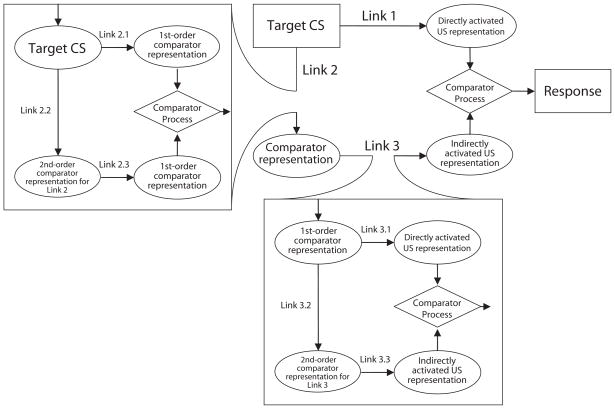Figure 1.
The extended comparator hypothesis (ECH; Denniston, Savastano, & Miller, 2001). Arrows represent the associations between stimuli. The strengths of the directly and indirectly associated outcome representations are compared in order to determine the strength of responding to the target cue. Ovals depict stimulus representations; rectangles depict physical events; diamonds represent the comparator process. CS, conditioned stimulus; US, unconditioned stimulus.

